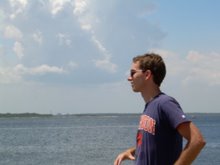I began by choosing a system for mapping based on isochrones, concentric circles representing periods of time (in my case 1 isochrone=1 hour). The methods are similar to those by Oskarlin and Carden.
I cut up a printed map into continents and arranged them according to different isochronic values to determine the clearest representation. I decided on the distance from London to NYC to be the basis for all other measurements.

After this, I chose cities from six continents proportional to their land area.
Cities Sampled:
Asia: 33.1%, 22 cities (14 plotted so far)
- Moscow
- St. Petersburg
- Jakutsk
- Beijing
- Hong Kong
- Tokyo
- Seoul
- Riyadh
- New Delhi
- Bangkok
- Singapore
- Brunei
- Shanghai
- Novosibirsk
- Cairo
- Cape Town
- N'Djamena
- Niamey
- Freetown, Sierra Leone
- Luanda
- Morovia
- Dakar
- Rabat
- Tunis
- Lusaka
- Antananarivo
- NYC
- Denver
- Los Angeles
- Vancouver
- Winnipeg
- Anchorage
- Miami
- Mexico City
- Nuuk, Greenland
- San Jose, Costa Rico
- Reykjavik
- Brasilia
- San Paolo
- Quito
- Lima
- La Paz
- Caracas
- Beunos Aires
- Santiago
- Paris
- Oslo
- Madrid
- Athens
- Kiev
- Perth
- Darwin
- Brisbane
- Wellington

Next, I redrew the map by pulling and stretching the existing boundaries according to the new position based on travel time. I then imported this information into FormZ to animate the morphing of the map from the geographic configuration to the the travel-time configuration.
Beginning: Geographic

End: Non-geographic

How the animation actually turned out was somewhat accidental and not entirely accurate, but interesting enough to post.
More images:


The circles in this close-up represent cities: orange = geographic location, blue = travel-time location.
Besides revising the model to improve its accuracy, I intend to model the topography of the countries to add a third dimension of transformation. How to actually tackle this is yet to be determined. I also hope to try the same mapping using other cities as hubs, particularly New York and Tokyo. This will hopefully allow for some interesting comparisons.
I noticed that the time proximity of locations is most often based on the frequency of travel, and this in most cases is a function of the city's population and developent. For instance, it takes about the same time to fly from London to Tokyo as it does to New Delhi even though the cities are a few thousand miles apart. This mapimation is an interesting visualization of the conceptual shrinking of the globe due to globalization. With a society increasingly focused on time, and technology continually closing the gap between location and time, this concept is becoming more and more relevant.

4 comments:
Hey, this is really interesting... let us know how the next step works out!
If you haven't seen Personal World Map yet, you might want to check it out. It also uses an economic basis for the map distortion, as well as travel time.
Really interesting mapping- great clarity and process. I'm intested in seeing the third dimension come into play!
I like the mapping of the world morphing...it makes me wonder if more than the shapes of the continents morph, or really, what is REALLY happening in the third dimension.
nate - what a provocative start to your topic. tom carden's link shows the cost impact of the world morphing. could your morphing show another type of impact that relates to how your mapping becomes three-dimensional (emissions/pollution impact)??
Post a Comment